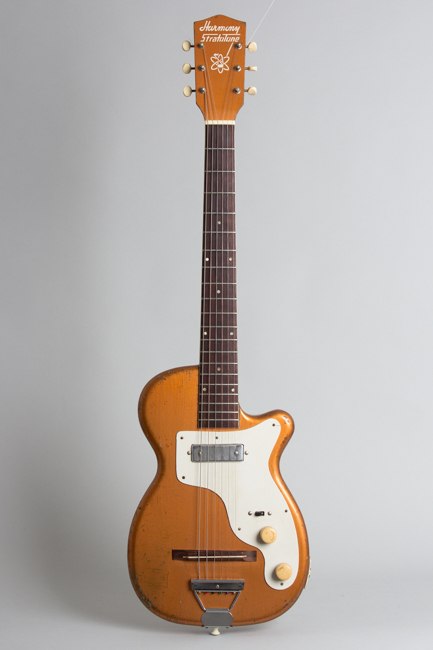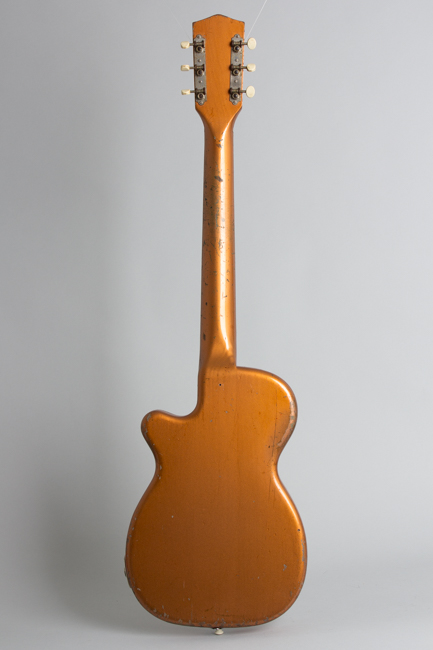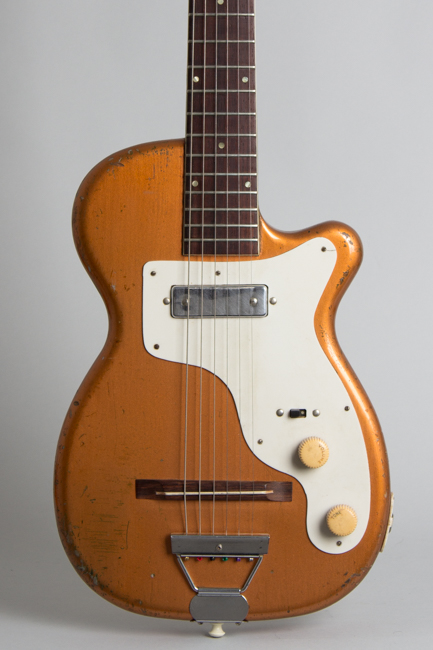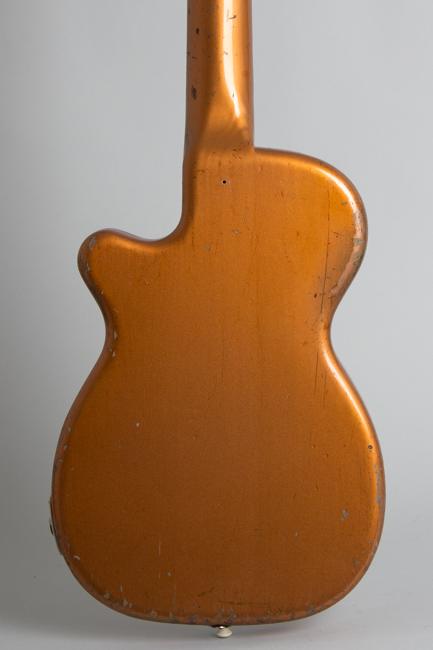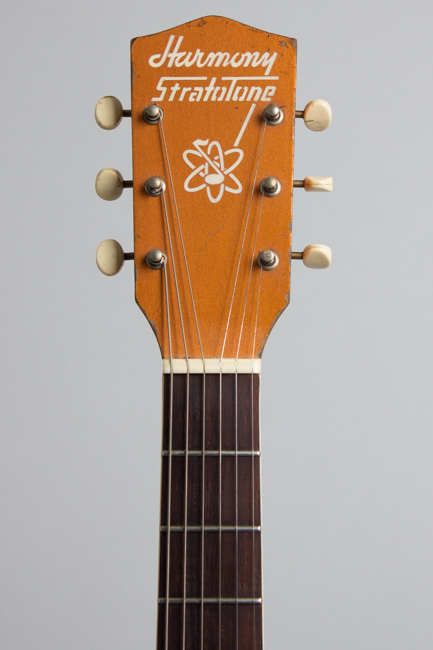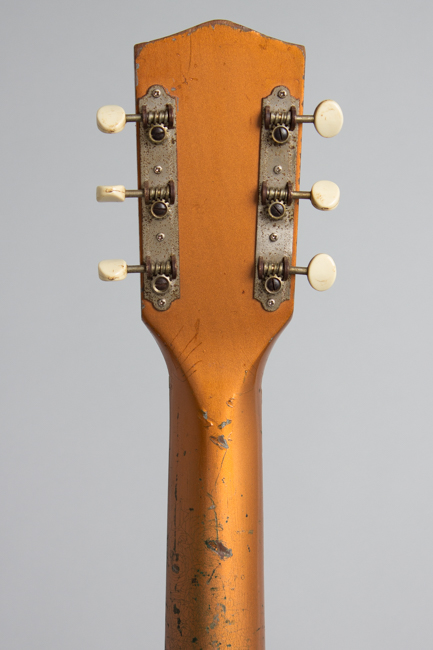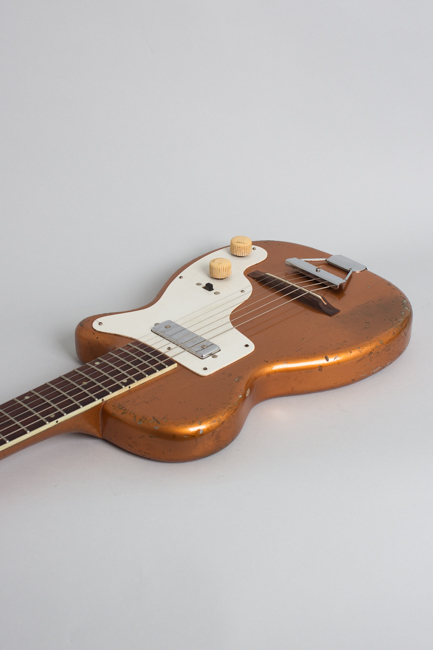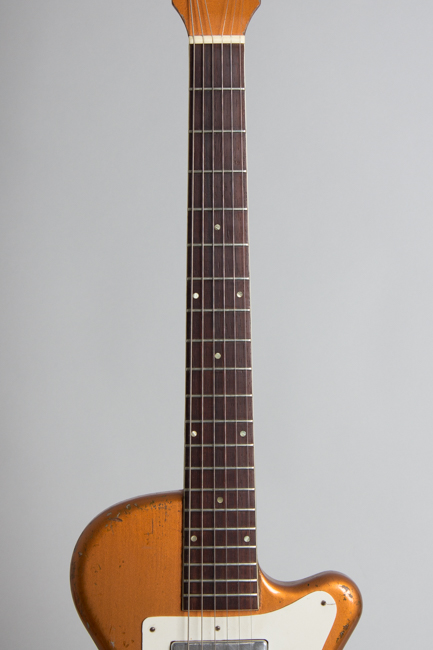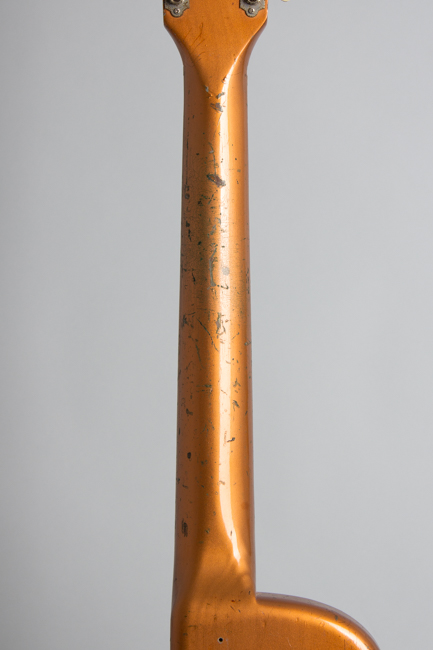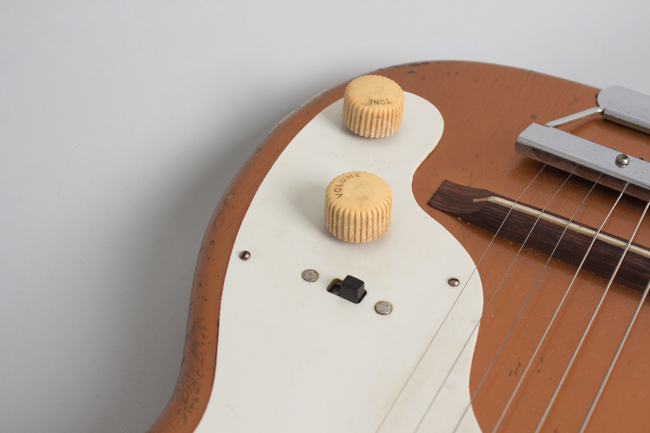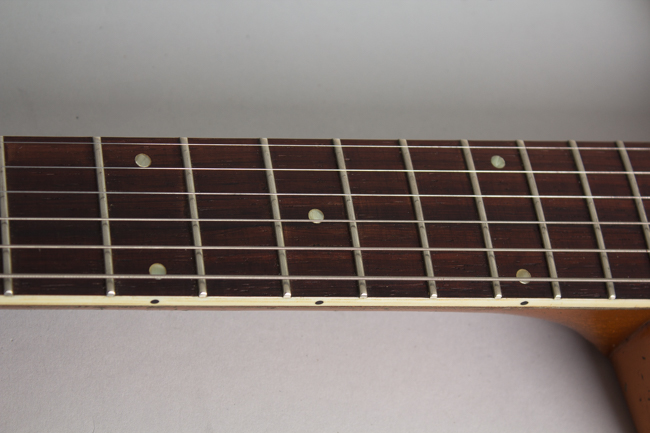Harmony H-44 Stratotone Solid Body Electric Guitar (1955)
Harmony H-44 Stratotone Model Solid Body Electric Guitar (1955), made in Chicago, copper lacquer finish, hardwood body and neck, rosewood fingerboard, black gig bag case.
Overall length is 36 7/16 in. (92.5 cm.), 10 3/4 in. (27.3 cm.) wide at lower bout, and 1 3/4 in. (4.4 cm.) in depth, measured at side of rim. Scale length is 25 in. (635 mm.). Width of nut is 1 3/4 in. (44 mm.).
This is a "naturally Relic'ed" but nicely original example of Harmony's primal slab-O-wood solidbody, the H-44 Stratotone. These appeared in the early 1950s soon after the Fender Telecaster and Gibson Les Paul launched the solidbody concept. Harmony was one of the first to jump on the bandwagon and the H-44 was their first solid offering, a small handy design built around a solid wood center and diminutive body. This guitar's original electronics rig is intact with pots dated the 51st week of 1954, so this is a fairly early model likely assembled and sold early in 1955. The neck seems slightly less huge than some, but still a handful!
The copper metallic lacquer finish shows wear overall with dings, chips, and scrapes, most notably to the sides especially the upper edge. The back of the neck has dings and scrapes but less wearing down to the topcoat than most, as the metallic overcoat usually wears quickly from contact with the hand. An areas on the upper part of body is similarly worn and discolored a bit from arm contact, but is not worn through to the primer.
This guitar remains largely original...even the fragile plastic pickguard is intact except for a small tight crack at the lower front screw. The single-layer plastic jackplate is a properly shaped repro; nearly all of the flimsy originals cracked to pieces long ago. The strap button at the bottom is a replacement, and there is a small screw hole from another one added at the heel and removed. The Waverly strip tuners are original; they show some corrosion but still work as well as they ever did.
The neck is straighter than most of these and the rosewood fingerboard has been trued and neatly refretted. The trapeze tailpiece has been pinned with a center screw (a common minor modification to get more break over the saddle) and as a result of these steps this guitar plays quite well, at least by H-44 standards. This is a great-sounding early example of this super cool, funky, and now much sought-after first-generation solidbody guitar. Overall Very Good + Condition.
Overall length is 36 7/16 in. (92.5 cm.), 10 3/4 in. (27.3 cm.) wide at lower bout, and 1 3/4 in. (4.4 cm.) in depth, measured at side of rim. Scale length is 25 in. (635 mm.). Width of nut is 1 3/4 in. (44 mm.).
This is a "naturally Relic'ed" but nicely original example of Harmony's primal slab-O-wood solidbody, the H-44 Stratotone. These appeared in the early 1950s soon after the Fender Telecaster and Gibson Les Paul launched the solidbody concept. Harmony was one of the first to jump on the bandwagon and the H-44 was their first solid offering, a small handy design built around a solid wood center and diminutive body. This guitar's original electronics rig is intact with pots dated the 51st week of 1954, so this is a fairly early model likely assembled and sold early in 1955. The neck seems slightly less huge than some, but still a handful!
The copper metallic lacquer finish shows wear overall with dings, chips, and scrapes, most notably to the sides especially the upper edge. The back of the neck has dings and scrapes but less wearing down to the topcoat than most, as the metallic overcoat usually wears quickly from contact with the hand. An areas on the upper part of body is similarly worn and discolored a bit from arm contact, but is not worn through to the primer.
This guitar remains largely original...even the fragile plastic pickguard is intact except for a small tight crack at the lower front screw. The single-layer plastic jackplate is a properly shaped repro; nearly all of the flimsy originals cracked to pieces long ago. The strap button at the bottom is a replacement, and there is a small screw hole from another one added at the heel and removed. The Waverly strip tuners are original; they show some corrosion but still work as well as they ever did.
The neck is straighter than most of these and the rosewood fingerboard has been trued and neatly refretted. The trapeze tailpiece has been pinned with a center screw (a common minor modification to get more break over the saddle) and as a result of these steps this guitar plays quite well, at least by H-44 standards. This is a great-sounding early example of this super cool, funky, and now much sought-after first-generation solidbody guitar. Overall Very Good + Condition.
